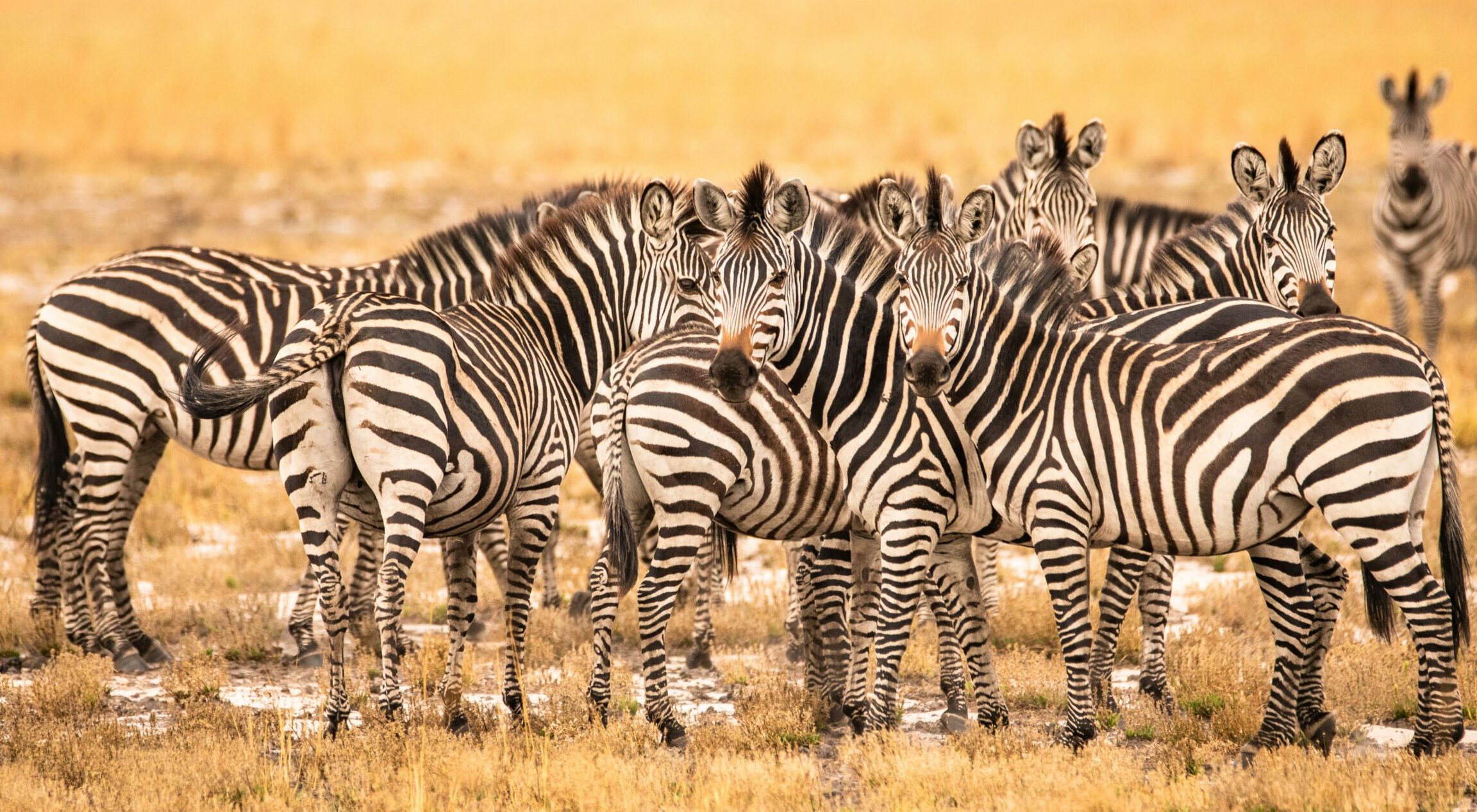
Why Do Zebras Have Not So Discreet Black & White Stripes ?
At first glance, zebra stripes seem like a terrible idea. In the golden grass of the African savanna, black and white isn’t exactly low profile. Yet every zebra wears this bold uniform. Why? Because stripes aren’t about blending in, they’re about confusing, protecting, and surviving.
Disguise through disruption
While stripes don’t hide zebras like a tiger’s coat might, they do something clever: they disrupt outlines. In a herd, the stripes blur together, making it hard for predators to single out one target. A lion sees a confusing wall of flickering lines, not a clear shape to chase.
And in motion, it gets worse; striped movement creates a kind of optical illusion, making it harder to judge speed and direction. For a predator that relies on a clean, quick pounce, that’s a real problem.
Other surprising benefits
The stripes may also help in other unexpected ways:
-
Thermoregulation: Some studies suggest that the alternating black and white stripes create tiny air currents that may help zebras cool down more efficiently in intense African heat.
-
Insect defense: Research shows that biting flies, like tsetse and horseflies, struggle to land on striped patterns. These insects are not just annoying, they carry dangerous diseases. Stripes may act like nature’s bug repellent.
-
Social recognition: Each zebra’s pattern is unique, like a fingerprint. Stripes may help them identify individuals, especially in large herds.
